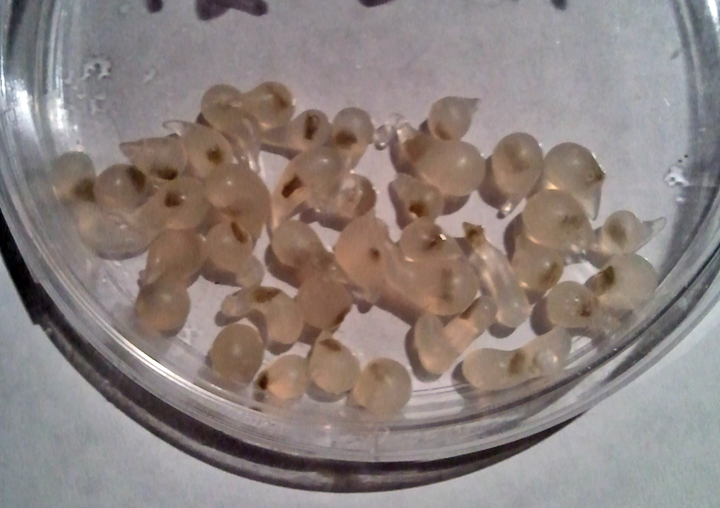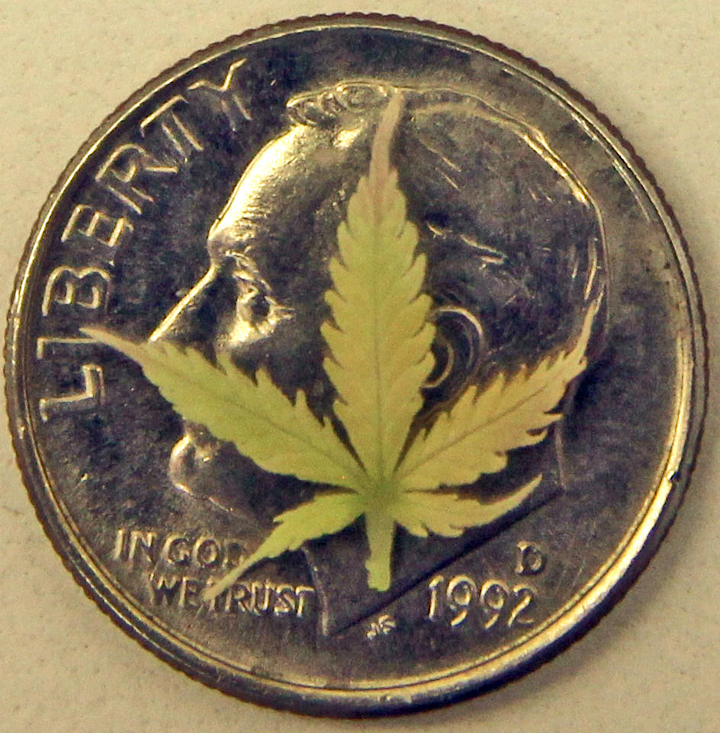Cannabis Tissue Culturing
Once the mass-produced cultured tissue for commercial use has regenerated, it is ready to be encapsulated, as there is no natural coating to protect the tissue while in storage or being transported.
 Above: SkunkPharm research produced these encapsulated cannabis tissue cultures.
Above: SkunkPharm research produced these encapsulated cannabis tissue cultures.
Here is a bit of a scientific explanation of why encapsulation is used by big agri-biz for mass production of plantlets:
“Encapsulation of matured somatic embryos:
Somatic embryos produced naked embryos without storage materials and protective layer (seed coat). This is very difficult for handling so this demands encapsulation and coating. The somatic embryos produced are encapsulated using gel agents like agar, alginate, polyco, carboxy methyl cellulose, guar gum, sodium pectate etc. Among these, alginate encapsulation was found to be more suitable and practicable. Alginate hydrogel is frequently selected as a matrix for synthetic seed because of its moderate viscosity and low spinnability of solution, low toxicity for somatic embryos and quick gellation, low cost and bio-compatibility characteristics.The use of agar as gel matrix was deliberately avoided as it is considered inferior to alginate with respect to long term storage. Alginate was chosen because it enhances capsule formation and also the rigidity of alginate beads provides better protection to the encased somatic embryos against mechanical injury.
Since somatic embryos lack seed coat and endosperm the matrix of encapsulation can be added with nutrients and growth regulator, which will serves as an artificial endosperm. This will increase the efficiency of germination and viability of (the artificial) seeds.” [3]
Tissue cultured plants are commercially available, all around the world and becoming a more accepted way of getting plant genetics ready-to-grow in remote corners of the world, or your backyard. Dry encapsulation is a method used for grains and field crops, where the capsules are spread over a large area. Wet encapsulation is used for cannabis and other plants that can not tolerate the dry encapsulation process.
Everything from mass produced sugar cane, banana, corn, many types of fruit trees, and hundreds of ornamental and vegetable varieties are also available as encapsulated tissue cultured from mother plants.
When you receive your encapsulated tissue cultures there are some different methods to regenerate growth, basically placing the capsule in a sterile grow medium and growing it as a seed with the proper conditions.
 Above: Chimera provided us with this image of a tissue culture on top of a dime.
Above: Chimera provided us with this image of a tissue culture on top of a dime.
When created in mass quantities, the savings from up-scaling brings the per-unit price to affordable levels compared to normal seed production.
However, if you are interested in creating your own home laboratory, this can be a D-I-Y project for the scientifically oriented, interested in long-term storage and preservation of rare genetics. Be prepared to spend some serious money investing in the materials and work station required.
Otherwise, as our friend Hammerhead/PurpleFrostbyte says “For me it’s not worth the time and $$$ to get it working properly and keep it working properly…”
As for myself, I am waiting to find a source online for these so-called artificial or synthetic seeds. I hope this article helps explain a bit about this technology.
~Payaso
Footnotes:
[1] – Wikipedia – https://en.wikipedia.org/wiki/Laminar_flow_cabinet [2] – Siti Norazura Jamal, University of Malaya [3] – http://agriquest.info/index.php/synthetic-seedsRead More Pages: 1 2
